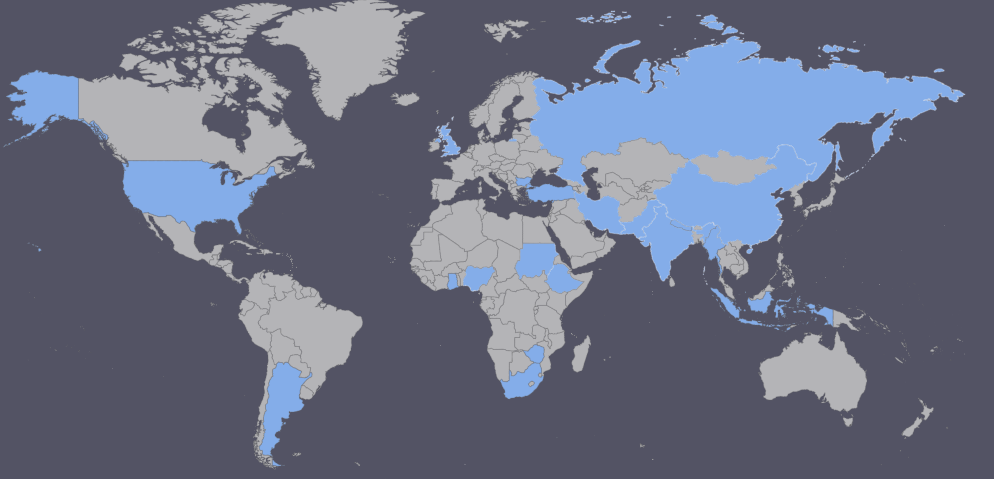Groundwater Potential Evaluation of Federal Polytechnic Ado-Ekiti Using GRRT-Index
Keywords:
Groundwater, Iso-resistivity, Isopach, Resistivity, Geo-electric, Groundwater Potential MapAbstract
The Vertical Electrical Sounding (VES) data method was used to acquire data in the study area and they are presented as depth sounding curve which is obtained by plotting apparent resistivity values against electrode spacing on a log-log or bi-log graph paper. The processed data were subjected to both detailed interpretations aimed at unravelling the subsurface groundwater potential and aquifer protective capacity of overburden units in the study area. The partial curve matching of the data obtained was done and computer iteration of each VES points was processed, in other to have the geo-electrical parameters of the surveyed area for proper groundwater mapping of the area. Twenty and six VES points was acquired, the curve types are QHA, QHK, QHA, HAK, HKH, AAK, AAA. Layer 1 and 2 has relative high resistance top soil and high resistance lateritic hardpan/sandy clay. In basement complex terrains, the intermediate layer H-type is commonly water saturated and it’s often characterized by high resistivity, high porosity, low specific yield and permeability which is good for groundwater. In order to have good understanding of the subsurface geology of the study area, calculations were made via the geological data, relief, resistivity values and thickness parameter obtained in the area in other to generate or obtained the potential map of the study area and this was able to reveal the lateral and subsurface information about the quantity and abundance of groundwater in the area of investigation. Based on these facts, we can conclude that water cannot be gotten from the study area of high resistivity. A similar study reveals that areas with thick overburden cover have high potential for groundwater. Consequently, areas with overburden thickness of 10m and above are good for groundwater development. Contour plot of aquifer resistivity, aquifer depth, aquifer thickness and traverse resistance were constructed.
In order to have good understanding of the subsurface geology of the study area, calculations was made via the geological data, relief, resistivity values and thickness parameter obtained in the area in other to generate or obtained the potential map of the study area and this was able to reveal the lateral and subsurface information about the quantity and abundance of groundwater in the area of investigation. The aquifer resistivity map reveals the sub-surface variation in electrical resistivity and attempt to correlate the geo-electric sequence across the profiles. Water does not conduct electricity except its constituent. Based on these facts, we can conclude that water cannot be gotten from the study area of high resistivity. A similar study (Bala and Ike, 2001) reveals that areas with thick overburden cover have high potential for groundwater. Consequently, areas with overburden thickness of 10m and above are good for groundwater development. Contour plot of Aquifer Resistivity, Aquifer Depth, Aquifer Thickness and Traverse Resistance were constructed.
References
Ajah, N.J. Zanders, C.C. Okeke, A.O., Kalu, Q., 2019. Evaluation of Groundwater Potential of Owerri West and Environs, Southeastern Nigeria Using Resistivity Method International Journal of Engineering Science 8 (6), 31-43.
Anomohanran, O., 2013. Geophysical Investigation of Groundwater Potential in Ukelegbe, Nigeria. Journal of Applied Sciences 13 (1), 119-125. https://doi.org/10.3923/jas.2013.119.125.
Ayobami, S.L., Aanuoluwa, A., Olafisoye, R., Oladejo, O.P., 2012. The groundwater potential evaluation at industrial estate Ogbomoso, Southwestern Nigeria Ocena potenciala podtalnice na industrijskem območju Ogbomoso v jugozahodni Nigeriji. Materials and Geoenvironment 59 (4), 363-390.
Bala, A.E., Ike E.C., 2001. The aquifer of the crystalline basement rocks in Gusau Area, North-Western Nigeria. Journal of Mining Geology 37 (2), 177-184.
Chachadi, A.G., João, P.L.F., 2005. Assessing aquifer vulnerability to seawater intrusion using GALDIT method: Part 2 -GALDIT Indicators Description: The fourth inter-celtic colloquium on Hydrology and Management of Water Resources. Guimaraes, Portugal, July 11-14, 2005.
Jones, M.J., 1985. The weathered zone aquifers of the basement complex areas of Africa. Quarterly Journal of Engineering Geology 18, 35-46.
Telford, W.M., Geldart, L.P., Sherrif, R.E., 1990. Applied Geophysics. Cambridge University Press, United Kingdom.
Tolche, A.D., 2021. Groundwater potential mapping using geospatial techniques: a case study of Dhungeta-Ramis sub-basin, Ethiopia, Geology, Ecology, and Landscapes 5 (1), 65-80. https://doi.org/10.1080/24749508.2020.1728882.
Downloads
Published
Issue
Section
License
The authors keep the copyrights of the published materials with them, but the authors are aggee to give an exclusive license to the publisher that transfers all publishing and commercial exploitation rights to the publisher. The puslisher then shares the content published in this journal under CC BY-NC-ND license.



